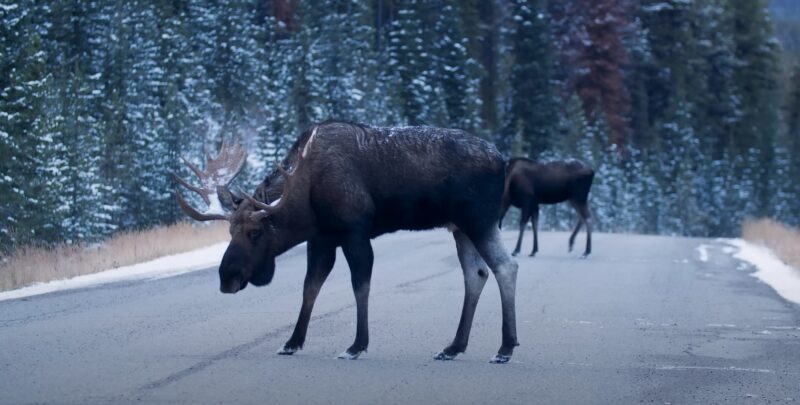Imagine walking through the forest and hearing a loud bellow, a soft grunt, or a high-pitched whistle.
These are some of the sounds that moose, the largest members of the deer family, use to communicate with each other.
Moose have a rich and varied vocal repertoire that reflects their emotions, needs, and intentions.
By listening to the sounds moose make, we can learn more about their lives and personalities.
In this post, I will discuss the moose’s soundscapes, where you will discover the different types of moose sounds, what they mean, and why they matter for moose communication.
Key Takeaways
- Moose use a wide range of vocalizations for communication, including bellows, roars, grunts, and bleats, each serving specific functions such as mating calls or alarms.
- The mating season amplifies moose vocal activity, with males and females making distinct sounds to attract mates and establish dominance.
- Non-vocal sounds, like raking antlers against trees, also play a crucial role in moose communication, especially for males asserting territory.
- Moose vocalizations have significant implications for conservation, as noise pollution can interfere with their communication and survival strategies.
- Understanding moose calls is not only vital for wildlife enthusiasts and hunters but also plays a role in effective wildlife management and conservation efforts.
Moose Vocalizations Explained
Moose vocalizations are as diverse as they are intriguing and are very important in this species’ behavior and biology, with each sound serving a specific function in the life of these forest dwellers.
From the deep, resonating bellows of males during the mating season to the tender bleats of a calf calling for its mother, every sound has its place and purpose in the moose’s world.
What Are the Different Sounds Moose Make?
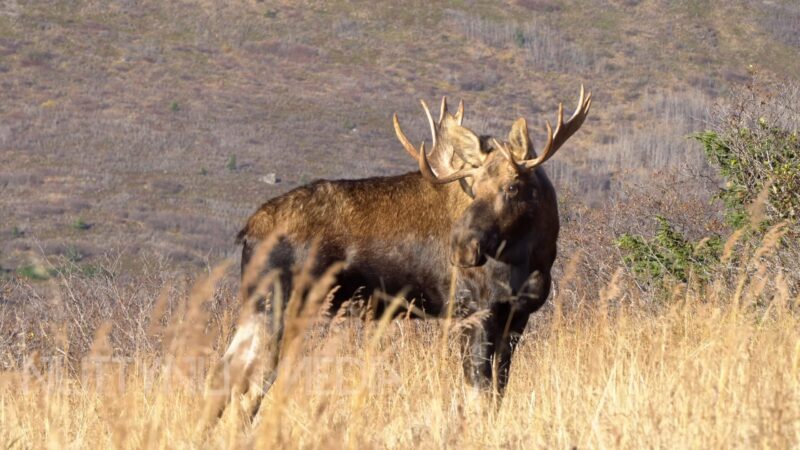
1. Bellow: The Call of the Wild
The bellow is a deep, resonant sound made by males, particularly during the rutting season.
This powerful vocalization can travel over five miles, cutting through dense forests to reach potential mates. It serves as a beacon, announcing the bull’s presence and readiness to mate.
2. Roar: A Sign of Aggression
Roars are aggressive sounds produced by males during the mating season to deter rivals and warn off potential threats.
This guttural sound is a clear indication of a moose asserting its dominance in the wild.
3. Croak: The Breeding Call
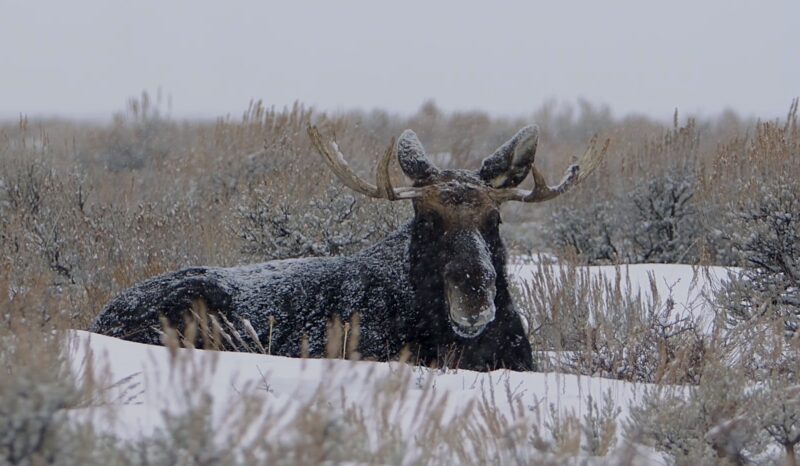
A less-known but equally important sound is the croak, a low-frequency noise used by bulls to attract cows for breeding.
This subtle sound plays a crucial role in the mating ritual.
4. Grunting in Intervals
Grunting in intervals is another vocalization by bull moose that indicates an investigation of a new scent.
This sound is often associated with the curiosity and alertness of the moose.
5. Non-Vocal Sounds: Raking Antlers and More
Moose also communicate through non-vocal sounds. For instance, bulls rake their antlers against trees and brush not only to deter other males but also to mark their territory.
This act produces a distinctive sound that serves as a warning to rivals.
Female Moose Calls
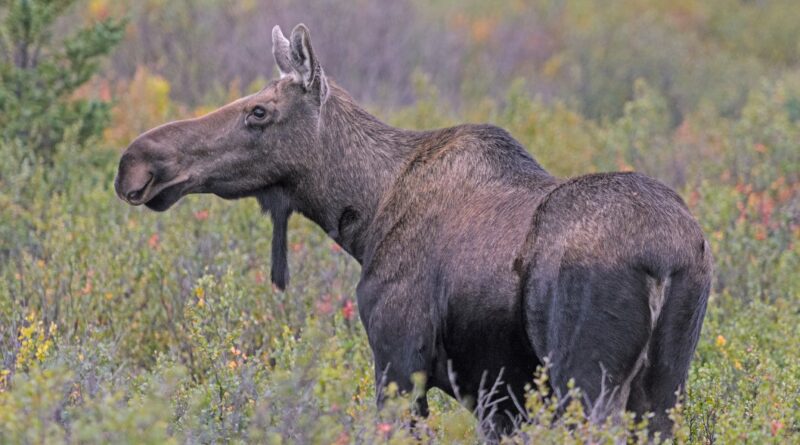
Female moose, or cows, have their own set of vocalizations, particularly during the mating season.
They produce moaning sounds when in heat, attracting males from miles around.
Cows also communicate with their calves and other cows using various calls, including barks as danger signals and wails indicating breeding readiness.
The Significance of Moose Calls in Nature
Moose vocalizations play a vital role in their survival and reproduction. These sounds facilitate communication over vast distances, enabling moose to find mates, assert territory, and warn of danger.
Understanding these calls not only enriches our knowledge of wildlife but also aids in conservation efforts by highlighting the importance of preserving natural habitats for these vocal animals.
How Do Hunters Mimic Moose Calls?
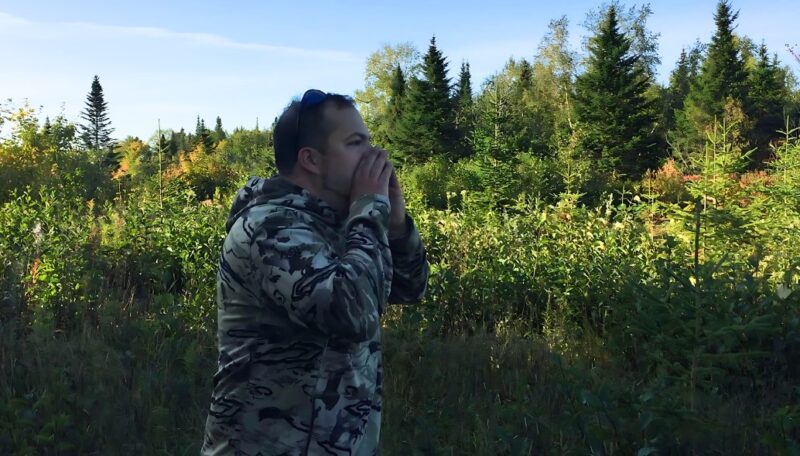
Hunters have long studied moose calls, using various techniques and tools to mimic them for hunting purposes.
The success of these methods relies heavily on patience and the ability to produce the right sound to lure a moose.
From electronic callers to hand-held devices that imitate moose grunts, the art of calling moose is a testament to the intricate understanding of these animals’ communication methods.
Moose calling requires a deep understanding of the animals’ vocalizations and behaviors.
Hunters often use a combination of vocal and non-vocal sounds, such as knocking antlers against trees, to simulate the presence of another moose.
The effectiveness of these techniques underscores the importance of sound in the moose’s world.
Scientific Details
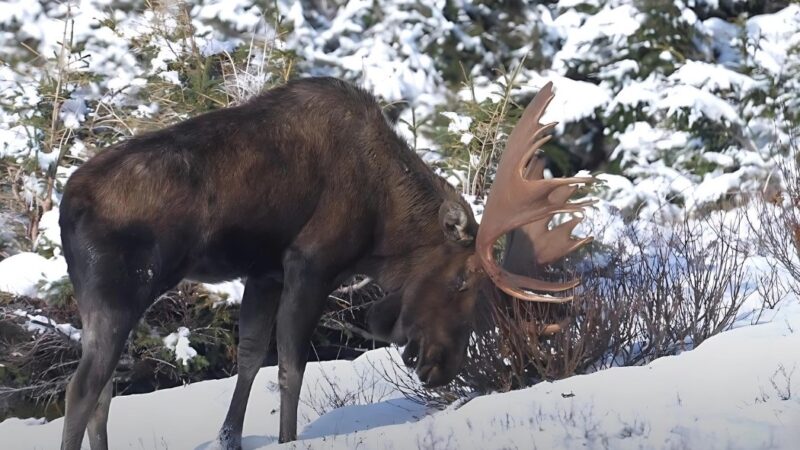
Moose calls are not random; they are the result of evolutionary adaptations that enable these animals to thrive in their environments.
The science behind these vocalizations involves understanding the anatomy of moose vocal cords, the physics of sound production, and the behavioral context in which these sounds are made.
Anatomy
The moose’s vocal apparatus allows for a wide range of sounds, from deep bellows to high-pitched bleats.
Research into the anatomy and physiology of these vocalizations reveals the complexity of the moose’s larynx and the muscular control required to produce such diverse sounds.
Acoustic Properties and the Environment
The acoustic properties of moose calls, including pitch, volume, and frequency, are tailored to travel long distances through dense forests.
The antlers of a bull moose, for example, may act as a parabolic reflector, amplifying and directing sound.
The environment plays a significant role in how these sounds propagate, with factors such as temperature, humidity, and vegetation affecting the distance and clarity of the calls.
Behavioral Context and Communication
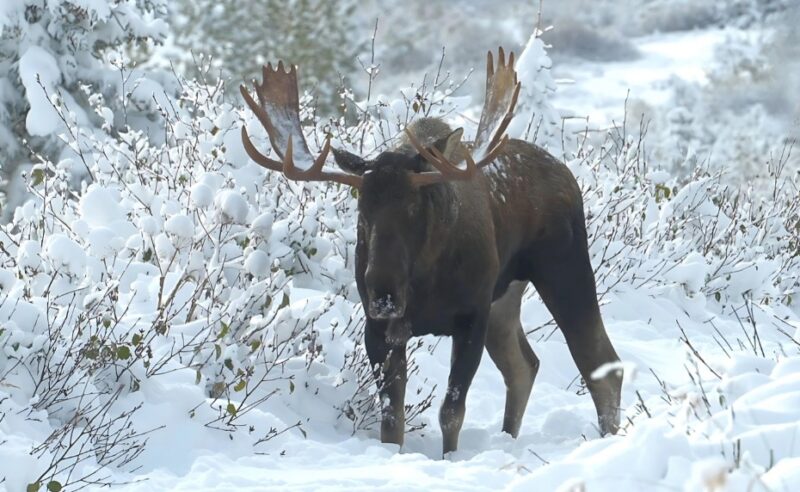
Understanding moose vocalizations requires more than just a knowledge of the sounds themselves; it necessitates an insight into the behavioral context in which these sounds are used.
The communication among moose is a dynamic interplay of vocalizations, body language, and environmental cues.
Mating Calls and Reproductive Strategies
During the rutting season, the complexity of moose communication is on full display. Males use a combination of sounds and physical displays to attract females and challenge rivals.
The bellow of a bull moose, for instance, signals not only its presence but also its size and strength, as lower-pitched sounds are typically produced by larger animals.
Mother-Calf Communication and Social Bonding
The communication between a cow and her calf highlights the importance of vocalizations in social bonding and survival.
The bleats and calls between a mother and her offspring ensure they remain close in the dense forests and protect the young from predators.
FAQs
Final Words
The sounds moose make are more than just noises; they are a language that communicates needs, desires, and warnings.
From the deep bellows of mating calls to the tender bleats of a calf, each sound plays a crucial role in the life of a moose.
Understanding these vocalizations not only enhances our appreciation of these magnificent creatures but also highlights the importance of conservation efforts to preserve their natural habitats and communication networks.
As we continue to explore and understand the natural world, the sounds of the moose remind us of the complexity and beauty of wildlife communication.
These vocalizations are a testament to the intricate social structures and behaviors that govern the lives of these forest giants, offering us a glimpse into their world and the symphony of sounds that fill it.
Related Posts:
- What Sounds Do Opossums Make? - Identify and…
- Where to Find Raccoons in the Forest? Wildlife Encounters
- What Sounds Does A Chipmunk Make: Study In Animal…
- What Sounds Do Raccoons Make? - Meaning and How to…
- What Sounds Do Squirrels Make? - From Bark to Whistle
- Why Do Moose Have Antlers? - From Decoration to Weaponry


